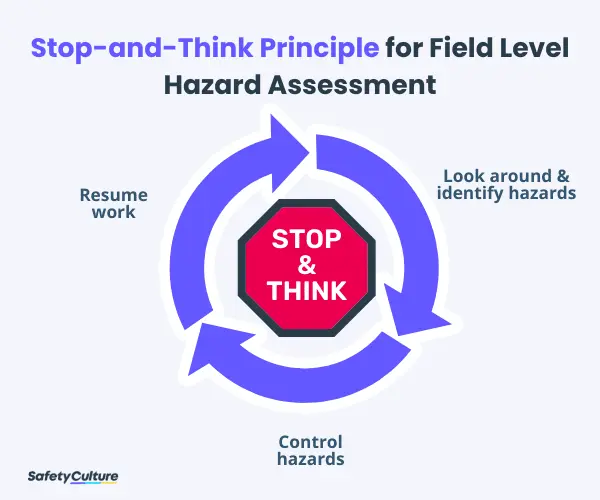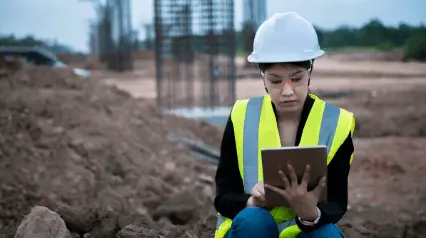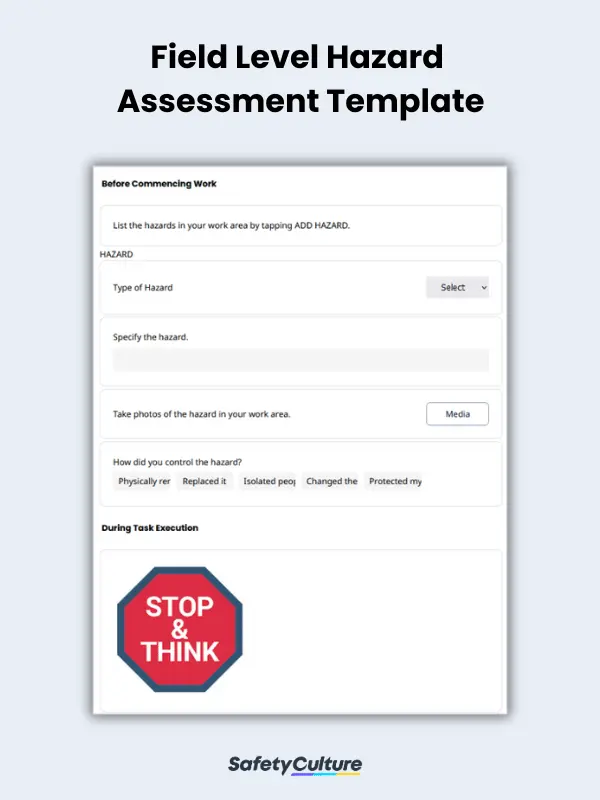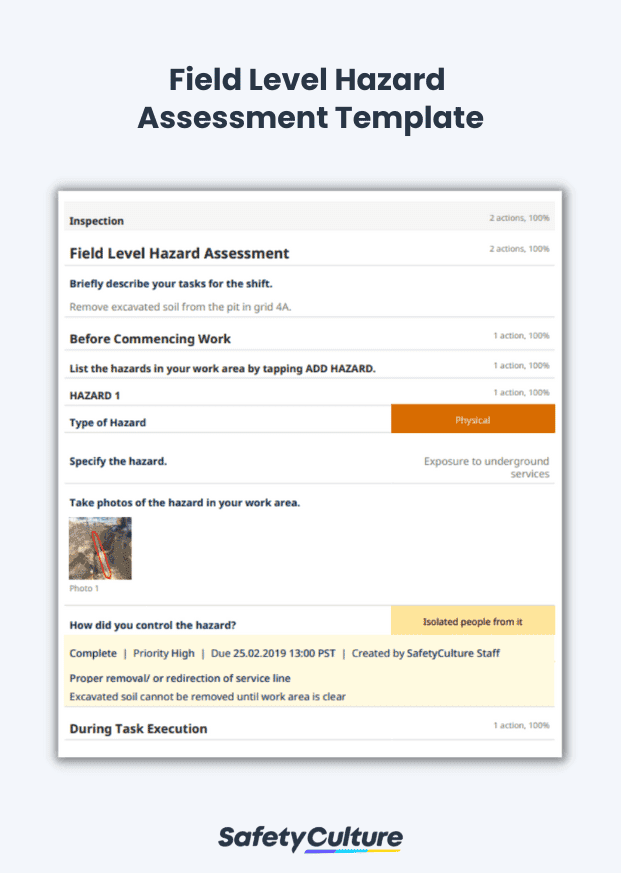What is a Field Level Hazard Assessment?
A field level hazard assessment (FLHA) is used by construction workers to identify and control hazards in designated work areas. Also known as field level risk assessment (FLRA), it empowers frontline workers to minimize health and safety risks at the onset through the “stop and think” process. FLHAs help develop the habit of task-hazard-control association and prevent deadly accidents such as the fatal four.
How to Perform a Field Level Hazard Assessment
A field level hazard assessment should be performed at the beginning of each shift and during task execution. The FLHA process can be expressed in the diagram below:

Stop-and-Think Principle for Field Level Hazard Assessment
Look around & identify hazards
Before commencing tasks, a construction worker should be aware of the people, equipment and materials present in the work area. Stop and think, “What might cause an incident?” Take note of anything that could potentially harm people or damage property.
Example: electrical hazard – loose and uncovered extension cords
Control hazards
Upon hazard identification, a construction worker can already apply control measures to reduce health and safety risks. Stop and think, “What can I do to prevent it?” Working through a hierarchy of controls can be an effective method in determining how to control hazards.
Example: physically removed the hazard – organized and secured extension cords to the floor
Resume work
Once the hazards are controlled, the construction worker can begin accomplishing tasks. A field level hazard assessment is a continuous process that prompts frontline workers to stop and think, especially during task execution.
4 Crucial FLHA Situations
In a job site, even the slightest changes in work plans should be updated in real-time because unexpected situations may arise when overlooked. While carrying out tasks, construction workers should stop, think, then update the FLHA when:
- There are significant changes in tasks (e.g. sudden change of work plans, unexpected characteristics of a task such as new configuration of equipment, etc.)
- New tasks are given during the shift
- New workers come on site
- Job site conditions change (e.g. weather, availability of materials, etc.)
How do I Fill Out a Field Level Hazard Assessment?
To fill out a field level hazard assessment, begin by using a field level hazard assessment template and proceed with the following steps:
- Briefly discuss the tasks to be done during the shift.
- Specify and take photos of the hazards in your work area before you begin work for the day.
- Indicate how the hazards are going to be controlled.
- Update the tasks, hazards, and controls in real-time.




